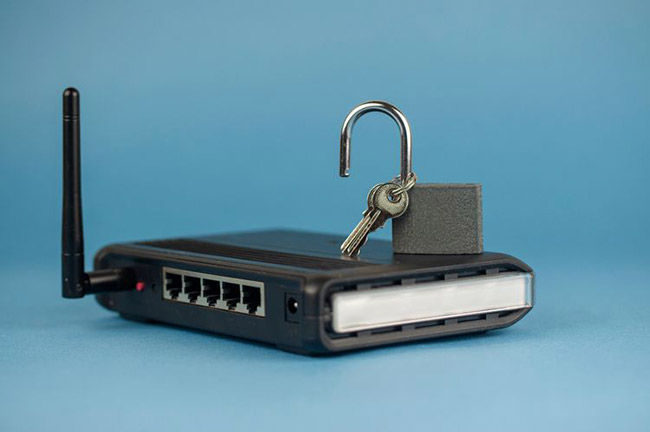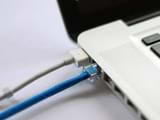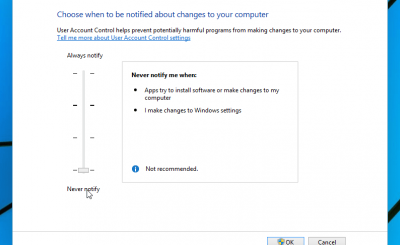Your WiFi password is very important and should be protected. If it leaks out, people can access the network and do whatever they want with your Internet connection. However, there are methods people commonly use to get your password and use the connection as they see fit.
Hackers know how to hack WiFi passwords. Here’s how someone can attack your WiFi, how they can steal your password, and what they can do with the password they’ve obtained.
Why do hackers want your WiFi password?
If hackers know the WiFi network password, they can use your Internet connection to do whatever they want. This can range from using data to stream videos and download files, to carrying out illegal activity.
Also, accessing the router is the first step to reaching the devices on it. If you use a networked hard drive, hackers will be interested in “sneaking” into the router and snooping on sensitive information.
There are many ways that hackers can target the router, but the article will focus specifically on how they can get your WiFi password. This attack method requires the hacker to be near your home to be able to use the password and connect to your WiFi network.
But what is “physically close?” If you’ve ever brought a laptop out into the garden, you can clearly feel this, the farther you go, the weaker the connection. Eventually, you will no longer be able to connect to the network.
When someone wants to use your WiFi network, they will use this same connection. As such, potential locations are limited to neighbors and possibly neighbors of those neighbors. If you live in an apartment, the surrounding neighborhoods will likely have a good connection strength to your WiFi.
How hackers get WiFi passwords
If you completely trust your neighbors, there’s little reason to believe they’re trying to hack your network. However, if you want to stay safe, see how bad guys can hack your WiFi network and how to protect yourself.
1. Unsecured Open Password Cracking

If someone wants to crack your password, they can try one of two methods. They can start guessing your password through Brute Force attack or destroy the security algorithm.
If the old method is chosen, the hacker is looking for a weak and insecure password, like “opensesame” or “123456” or even just “password”. They are very easy to break and allow hackers to break into WiFi networks.
Fortunately, today’s routers come pre-programmed with strong and unique passwords. Therefore, if you keep the default password, then hackers will be less likely to get in.
However, these routers also allow people to change their WiFi passwords, which could potentially be turned into something weaker. Therefore, if you or someone else has changed the password to something simple, you may want to consider creating a stronger password.
If the password cannot be guessed, hackers can “open” weak security algorithms. In general, the older the algorithm, the easier it is for hackers to break in.
The worst is WEP. This algorithm is not used or even supported by most modern routers, but some older hardware will still use it. A hacker can use tools and crack a WEP-secured router for up to an hour.
On the other hand, you have WPA2 and WPA3. These algorithms take a long time (sometimes years) to crack, so using either of them will prevent hackers from getting in… at least for a very long time.
2. Find and use default router password

If you haven’t changed your router’s password, a hacker can figure out what it is and use it to gain access to your WiFi. Fortunately, routers have come a long way, no longer using default passwords and usernames. admin more, but instead will have a unique password generated with numbers, lowercase and uppercase characters.
This feature means that the router will have a password that is hard to crack as soon as you plug in the device and do not change anything further. However, you still need to access your own router, so the device will usually have the default password printed somewhere.
While the password on the back of the router makes it easy to remember, it also means that the router is essentially revealing its own password. If you put your router next to a window, people can look in and see the password. Likewise, if a neighbor comes to visit, they can write down the password before leaving.
So, remember to pay attention to the default password. Hide it so people can’t see it from the outside, or change the password to something unique and not write it down anywhere.
3. Get the password through social interaction

Let’s say your neighbor visits for a short time. They noticed that they weren’t getting a good data signal on the phone, so they asked to access your WiFi. As a good neighbor, you immediately tell them the password.
They may not mean anything bad. But either way, they’ve now stored your password on your phone and can now retrieve it and use it on other devices back home.
The solution seems easy: Just don’t give out your password. However, if you do not provide your password, you will feel guilty.
What is the solution to this problem? That is the guest network setup. This is the “subnet” that broadcasts alongside your main network. You then give your guest a password to connect to this subnet.
As a best practice, you can reset the password on the guest network regularly to make sure no one abuses it. And you don’t need to update the password on all your devices, as they are all connected to the main network.
WiFi Password: When in doubt, change it now!
Maybe the article has drawn a rather scary scenario for WiFi hackers. After all, if someone gets hold of your password, they can use your Internet connection to perform illegal actions or steal data stored on a WiFi-connected hard drive.
But never forget that you have the edge over your router. Because the router is actually located in your home, you will always have access to it and can prevent any hackers from trying to take advantage of the Internet connection.
For example, today’s routers can tell you how many devices are connected to it. You can view this information by logging into your router’s settings and checking network statistics. If any device looks suspicious, you can change the router password to prevent any hackers from doing bad deeds.
You usually need the admin username and password to access the router settings, and the password must be different from the password of the WiFi network. Even if a hacker somehow gets hold of your admin password, you still have physical access to the router. A good router will have a factory reset button on it, which will wipe everything the hacker does, then let you get your hardware back.
You should be vigilant and protect your WiFi router from hackers. However, don’t worry too much! It is very easy to get rid of any WiFi hacker and regain control over your network.
Source link: How hackers steal WiFi passwords? How to prevent this?
– https://techtipsnreview.com/





